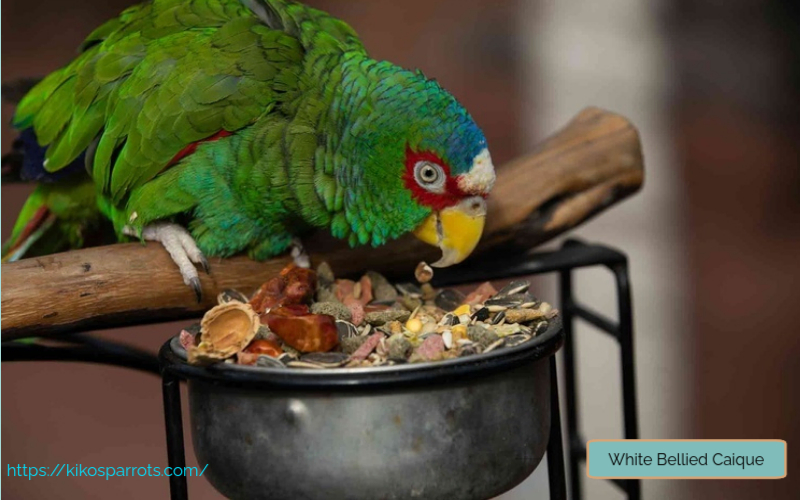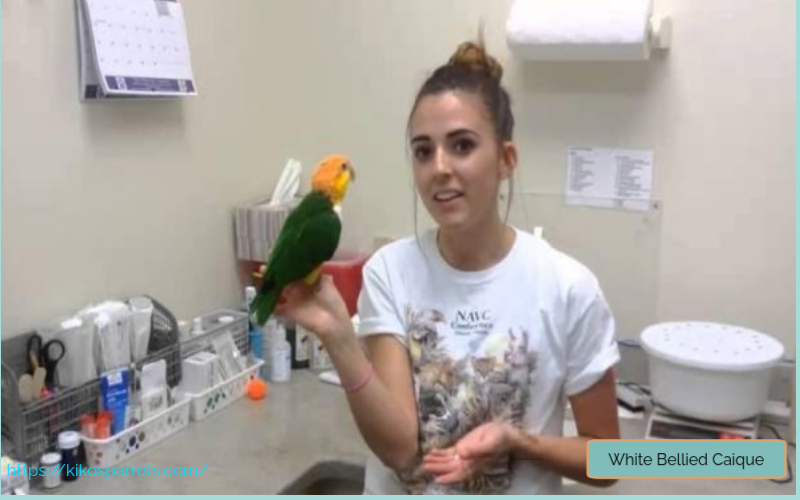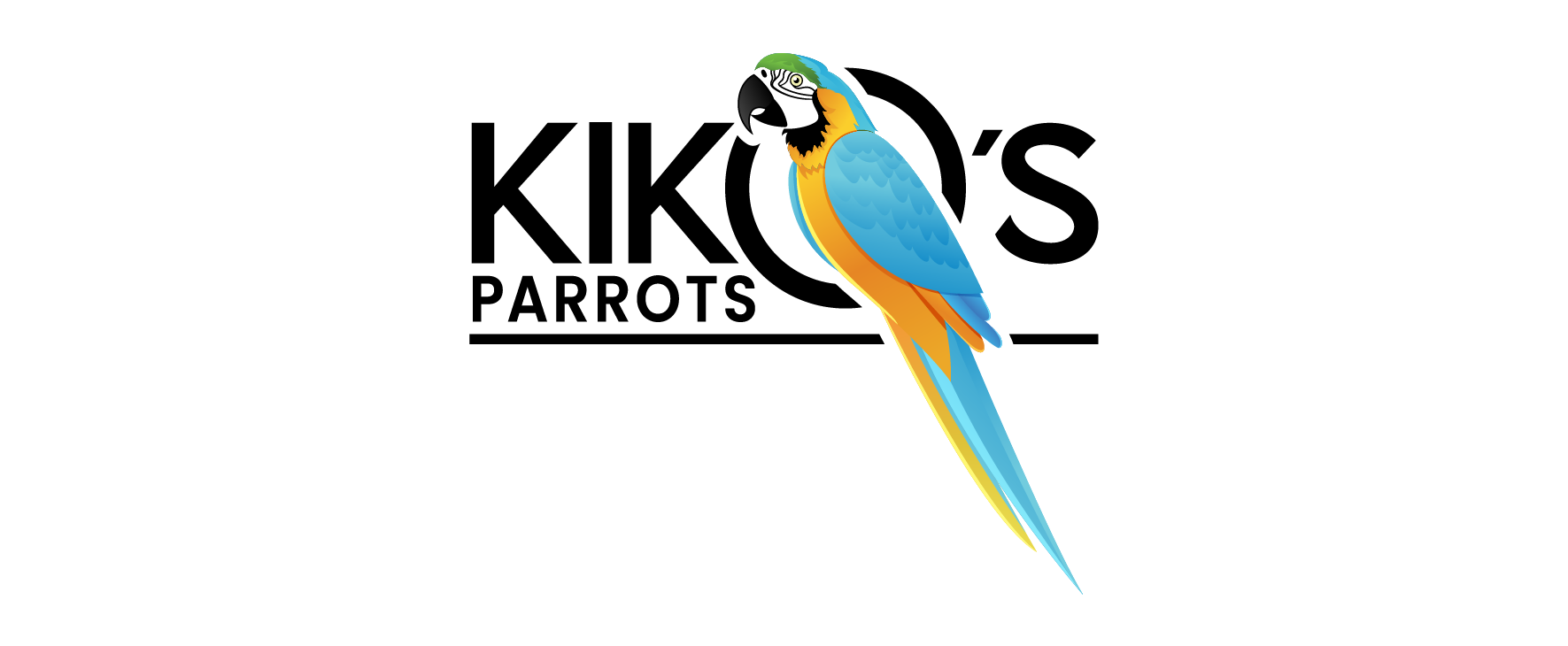Table of Contents
- Introduction to White Bellied Caiques
- Physical Characteristics
- Personality Traits
- Diet and Nutrition
- Where to Find White-bellied Caiques
- Cage Requirements
- Environmental Enrichment
- Social Interaction and Training
- Health Considerations
- Common Health Issues
- Grooming and Hygiene
- Tips for Owners
- Signs of polyomavirus in white-bellied caiques
- Conclusion
Introduction
White Bellied Caiques are small, colorful parrots that thrive in social environments. They are known for their energetic and playful personalities, often exhibiting behaviors like “surfing” on their owners’ arms or shoulders. These birds are highly intelligent and can form strong bonds with their owners.
White Bellied Caique parrots are known for their vibrant personalities and playful nature, making them a delight to own as pets. Originating from South America, these birds are highly social and require a lot of attention and interaction. In this article, we’ll delve into the care and personality of White Bellied Caiques, providing insights into their dietary needs, social behavior, and health considerations.
Physical Characteristics
White Bellied Caiques are relatively small, typically measuring about 9 inches in length. They have a distinctive white belly and vibrant green plumage on their back and wings. Their bright colors and compact size make them visually appealing pets.
Personality Traits
- Playfulness: White Bellied Caiques are extremely playful and require a lot of interaction to keep them entertained.
- Social Behavior: They are highly social birds that thrive on companionship. They can become territorial and may require training to establish boundaries.
- Intelligence: Caiques are intelligent birds that can learn tricks and behaviors with proper training.
Diet and Nutrition

White Bellied Caiques require a varied diet to stay healthy. Here are some key components of their diet:
| Diet Component | Description |
|---|---|
| Pellets | High-quality pellets should form the base of their diet, providing essential nutrients. |
| Fruits and Vegetables | Include a variety of fruits like apples, oranges, and bananas, and vegetables such as broccoli and carrots. |
| Seeds and Nuts | Offer soaked seeds and nuts like walnuts and macadamia nuts as treats. |
| Flowers | In the wild, they eat flowers, so offering safe flowers can be a nice treat. |
Where to Find White-bellied Caiques
White-bellied Caiques are native to South America, specifically in countries like Brazil, Bolivia, Peru, and Ecuador. They inhabit lowland tropical rainforests, particularly in areas south of the Amazon River, and are often found in várzea forests, which are prone to flooding and have high humidity. These birds prefer living in the forest canopy and along watercourses, where they can be seen in pairs or small groups outside the breeding season.
for more details read: Birds for Sale Near Me: Guide to Finding Healthy Pet Birds
Price of White-bellied Caiques
The price of White-bellied Caiques can vary significantly depending on factors such as location, age, health, and availability. Generally, exotic birds like caiques can range from a few hundred to several thousand dollars. However, specific pricing information for White-bellied Caiques is not readily available in the search results. It’s advisable to contact local pet stores or breeders specializing in exotic birds for more accurate pricing.
Conservation Status
It’s important to note that White-bellied Caiques are considered endangered in their natural habitat due to deforestation and other environmental pressures. Therefore, purchasing them may involve legal restrictions and ethical considerations. Always ensure that any purchase is legal and supports conservation efforts.
Cage Requirements
- Cage Size: The cage should be spacious enough to allow for movement and exercise. A minimum size of 24″ x 24″ x 36″ is recommended
- Bar Spacing: Ensure bar spacing is appropriate to prevent escape and injury. A spacing of about 1 inch is suitable for Caiques
- Cage Accessories: Include multiple perches, toys, and a bird bath to keep them engaged and clean
Environmental Enrichment
- Toys and Play Gyms: Provide a variety of toys to keep them entertained. Rotate toys regularly to prevent boredom
- Natural Perches: Include natural perches like eucalyptus branches to help maintain their beak health.
Social Interaction and Training
- Socialization: Spend quality time with your Caique daily to strengthen your bond and prevent behavioral issues.
- Training Techniques: Use positive reinforcement techniques to train your Caique. Avoid punishing, as it can lead to stress.
Health Considerations
- Regular Check-Ups: Regular veterinary visits are crucial to monitor their health and catch any issues early.
- Preventive Measures: Ensure vaccinations against diseases like polyomavirus, which can be deadly if not treated promptly.
Common Health Issues

- Polyomavirus: This virus is particularly dangerous for young birds and requires early vaccination.
- Feather Plucking: Stress and boredom can lead to feather plucking. Ensure adequate social interaction and environmental enrichment.
for more detail read: Expert Answers on White Bellied Caique Health Concerns
Grooming and Hygiene
- Nail Trimming: Regular nail trimming is essential to prevent overgrowth.
- Beak Maintenance: Provide natural perches to help keep their beak trimmed and healthy.
Tips for Owners
- Patience and Consistency: Be patient and consistent in your interactions and training.
- Provide Variety: Rotate toys and activities regularly to keep your Caique engaged and stimulated.
Signs of polyomavirus in white-bellied caiques
Polyomavirus is a highly infectious and deadly disease that affects many bird species, including White-Bellied Caiques. It is particularly dangerous for young birds under four weeks old, but all ages can be susceptible if not vaccinated or exposed to the virus. Here are the common signs of polyomavirus infection:
- Gastrointestinal Symptoms:
- Loss of Appetite: Infected birds may show a decrease in appetite.
- Regurgitation and Vomiting: These are common symptoms, often accompanied by diarrhea.
- Dehydration: Birds may become dehydrated due to excessive fluid loss.
- Weight Loss: Rapid weight loss is a significant indicator of infection.
- Physical Symptoms:
- Swollen Abdomen: A distended abdomen is a visible sign of infection.
- Hemorrhages: Bleeding under the skin can occur, often visible as petechial or ecchymotic hemorrhages.
- Difficulty Breathing: Some birds may experience respiratory distress.
- Feather Abnormalities: Infected birds may display abnormal feather growth or loss.
- Behavioral Changes:
- Depression and Listlessness: Infected birds often appear lethargic and depressed.
- Tremors and Paralysis: Neurological signs such as tremors or paralysis can occur in severe cases.
- Other Signs:
- Excessive Urination: Some birds may exhibit increased urination.
- Delayed Crop Emptying: This can be a sign of gastrointestinal distress.
Prevention and Management
Preventing polyomavirus infection is crucial, as there is no definitive treatment for the disease. Here are some preventive measures:
- Vaccination: Ensure that your bird is vaccinated against polyomavirus. Vaccines are available for young birds and should be administered in two doses, with a booster dose given annually.
- Hygiene Practices: Maintain strict hygiene by regularly disinfecting the cage, utensils, and any surfaces that may come into contact with the bird. Use oxidizers like chlorine bleach for effective disinfection.
- Quarantine New Birds: Always quarantine new birds before introducing them to your flock to prevent transmission.
Early detection and prevention are key to managing polyomavirus in White-Bellied Caiques. Regular veterinary check-ups and maintaining a clean environment can help prevent the spread of this deadly virus.
FAQ’S
1. Are white-bellied caiques good pets?
Yes, white-bellied caiques can be excellent pets for people who are looking for a playful, energetic, and highly interactive bird.
2. What is the lifespan of a white-bellied caique?
Another reason they make such good pets is that they can live for 25-30. With a high life expectancy, these birds will bring joy to your life for a long time.
3. Are white-bellied caiques rare?
Yes, white-bellied caiques are endangered and considered rare in the wild.
4. Do caiques bond to one person?
While they’re not known for their talking abilities, caiques bond strongly with their human companions. They thrive on interaction and love to be the center of attention, often demanding your focus with their antics.
5.Are caiques nippy?
Purchasers should beware if they are seeking a companion bird; Caiques can get nippy!
6. Are caiques cuddly?
Yes, caiques can be cuddly, but they can also be nippy. Caiques are social and affectionate birds that bond with their owners. They can be playful and enjoy attention.
7. How much sleep do caiques need?
How long do pet parrots sleep? African grey parrots, Macaws, Cockatoos, Alexandrines, Amazons, Eclectus, Caiques, Senegal’s, Cape parrots, Quakers, Ringneck and Red bellied parrots may need a 12-hour day/night cycle as they originate from the tropics.
8. What do caiques like to play with?
Cardboard is fun to shred, rip and break into smaller chunks, and Parrots adore the sound it makes as they tear it apart too. Handy and versatile, Birdie Bangles and Parrot Pipes provide layers of tightly rolled cardboard that Caiques love to peel apart and shred.
9. Do white bellied caiques talk?

White-bellied caiques are not known for being strong talkers, but they can learn to mimic sounds.
10. Are caiques territorial?
Caiques can be territorial, especially during breeding season once they are mature. They tend to defend their cage territories, and can be very jealous of other birds. They can be aggressive toward other birds, but tend not to be so with their people.
Conclusion
In conclusion, White Bellied Caiques make wonderful pets for those who can provide the necessary care and attention. By understanding their dietary needs, social behavior, and health considerations, you can create a happy and healthy environment for your bird. Remember, these birds thrive on interaction and require a lot of space and stimulation to prevent boredom and stress.
Tags
white bellied caique, caique care, parrot personality, bird nutrition, cage requirements, social interaction, health issues, grooming tips.




